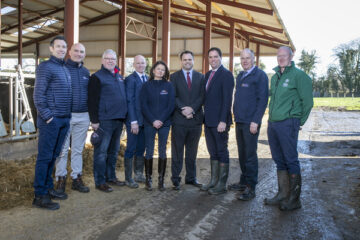Climate change and global warming have become huge topics of interest in recent years. However, what most people do not realise is that industrialised food and farming production has long been one of the largest contributors.
As a population, there needs to be a focus on moving food production away from being one of the leading contributors to being carbon neutral or even carbon negative. According to Iron Ox CEO Brandon Alexander, “while renewable energy has gained momentum over the past 20 years, food has gone in the opposite direction as we’ve boosted industrial farming. We put more chemicals into the land, and we’ve been increasing our greenhouse gas emissions over time.”
According to Alexander, the challenge with climate change and farming is in taking a trend that is going in the wrong direction, and shifting it, flatten it out and eventually reversing that curve. Alexander’s firm has taken a tech-centric approach to addressing farming issues. In parallel to the innovations John Deere and Monarch Tractor have introduced, Iron Ox is embracing the latest advances in robotics, autonomy and AI to make a meaningful difference to one of the oldest and arguably most important market sectors in existence.
Alexander said, “our goal is to get farming to the point of zero waste, where every joule of energy, or every liter of water creates a calorie and nutritional value. This is challenging because as a society our understanding of plants today is still fairly rudimentary. Plants are complex, living things tons of variables. If we’re going to get to zero waste growing, we need to understand the plant at a level that really isn’t possible today.”
The Iron Ox Solution
Iron Ox has developed its own approach to hydroponics, including a robotics-manned scanning booth. Alexander continues, “every pallet of plants goes through our photo booth and gets scanned multiple times throughout the growth process, which provides us with in-depth 3D images from seed through to adult. This information is then embedded to our AI system, and in conjunction with our plant science team, we can constantly look at all the different attributes, color, volume, height, etc. to quickly identify if we have a healthy plant or an anomaly.”
The Iron Ox system is designed to provide the level of granularity its automation requires. “For example, our system may say this plant has a deficiency, prompting our dosing system to give the plant the exact amount of nitrogen it needs rather than the industrialized approach of spraying the whole facility. With a better understanding of what the plant is doing, we can create a positive change.”
This is where robotics enter the picture as well. While the AI system performs critical data learning, the autonomous mobile robot and its robotic arm are constantly listening – and taking action, constantly navigating and serving as the workhorses of the farm including doing any physical action needed to optimise growth cycle operations.
By using six-by-six-foot pallet or batches, each pallet can quickly transition from leafy greens to strawberries or tomatoes. Being able to make quick changes required developing a mobile robotic system to constantly monitor the farm determining which pallets needs each specific operation.
The grow system essentially has self-driving car technology with multiple LIDAR systems, upwards and forward-facing camera systems, and a rocker suspension to handle the different variation and the ground as well as strength since pallets weigh over 500 kilograms.
While Alexander has lofty goals, he is under no illusion about the size of the challenge his crew is facing. After all, a move towards the sustainable, decentralized farm model is not going to happen overnight. And, building the next generation of farming will require lots of different backgrounds coming together to make it happen.
He concluded, “we have an amazing plant science team constantly working with our engineering team to help understand what traits we care about, what should we be looking for and what are the actions our equipment should take. Indoor, decentralised farming is important. The ability to use dramatically less water with hydroponics also provides critical benefits. While these are all necessary steps, they are pieces to a bigger picture of better plant management.”
Source: Industry Week



